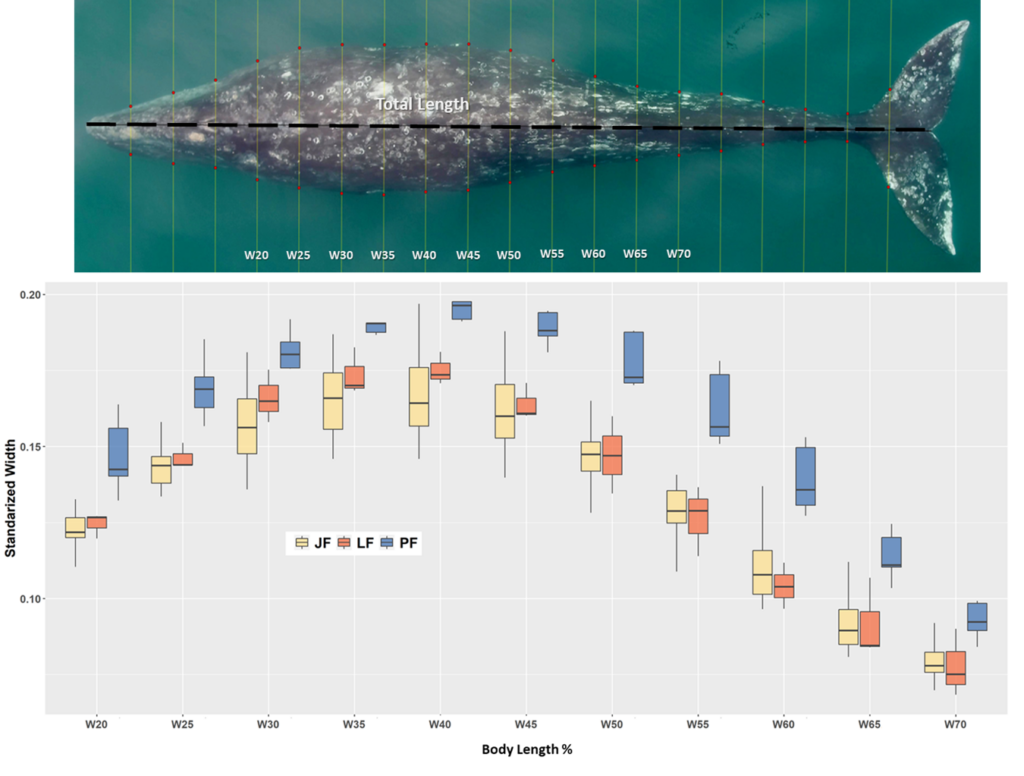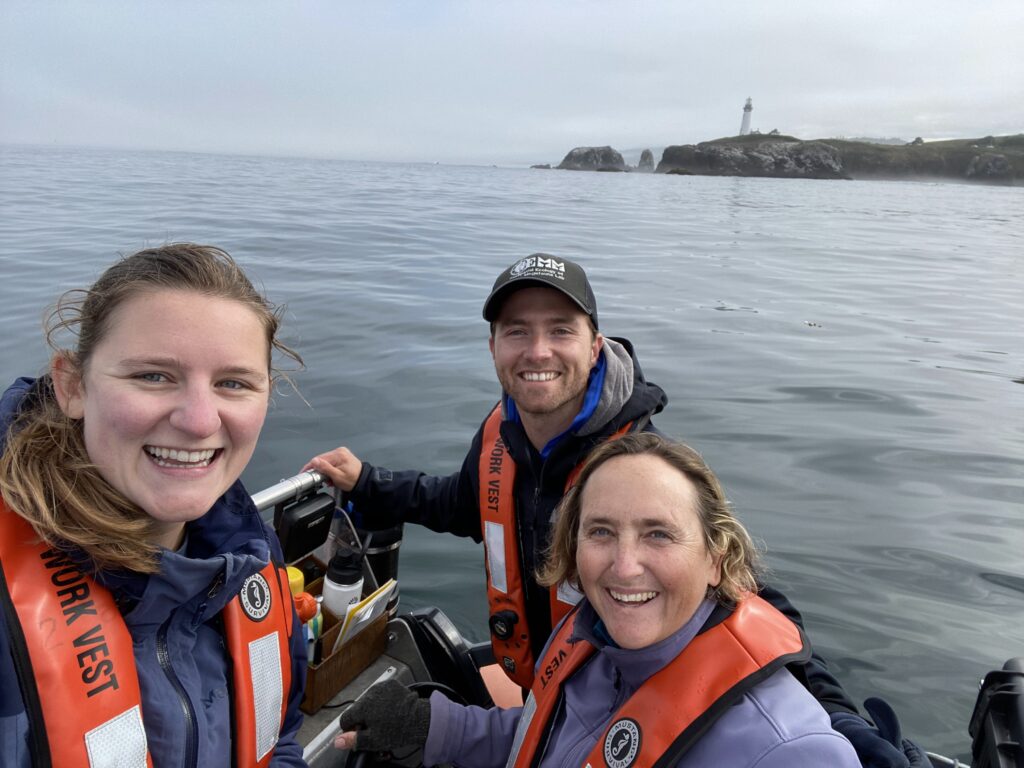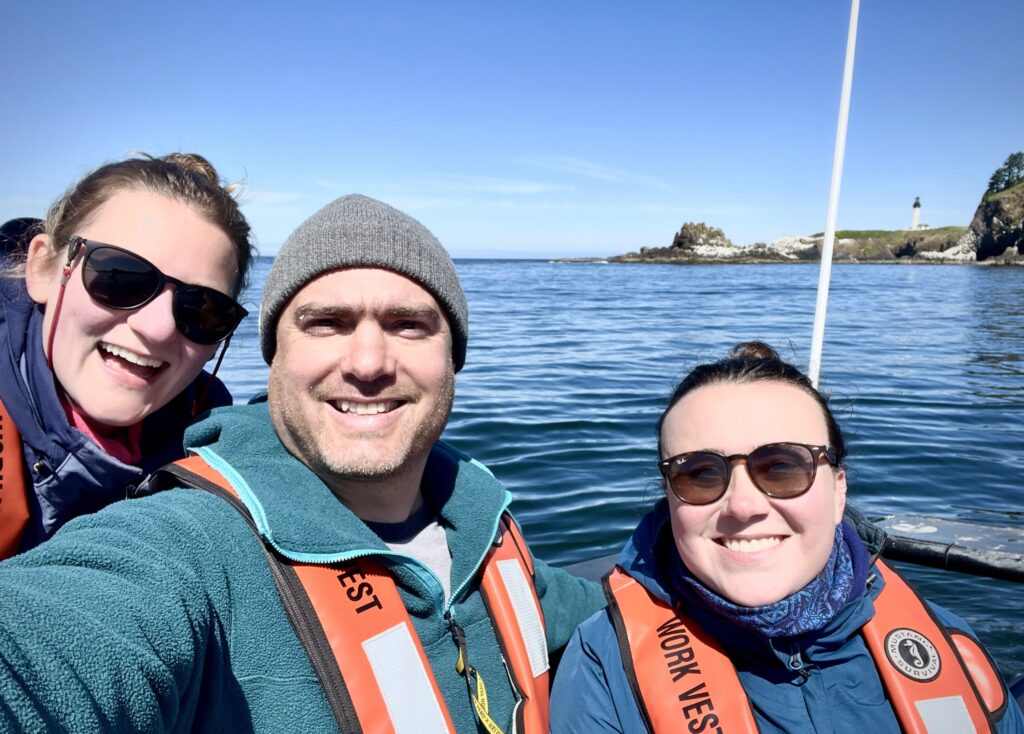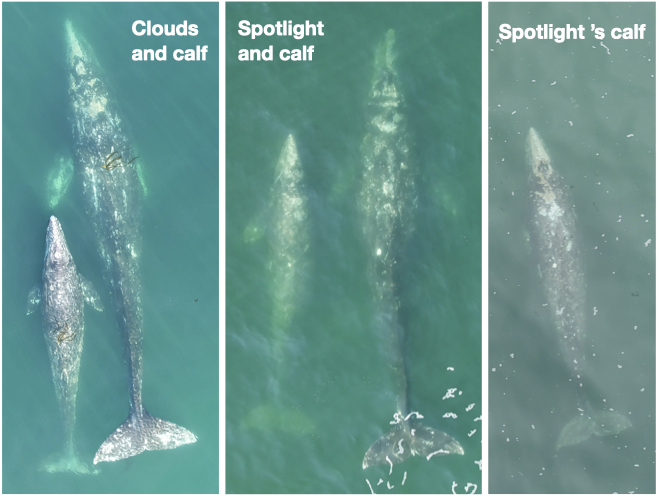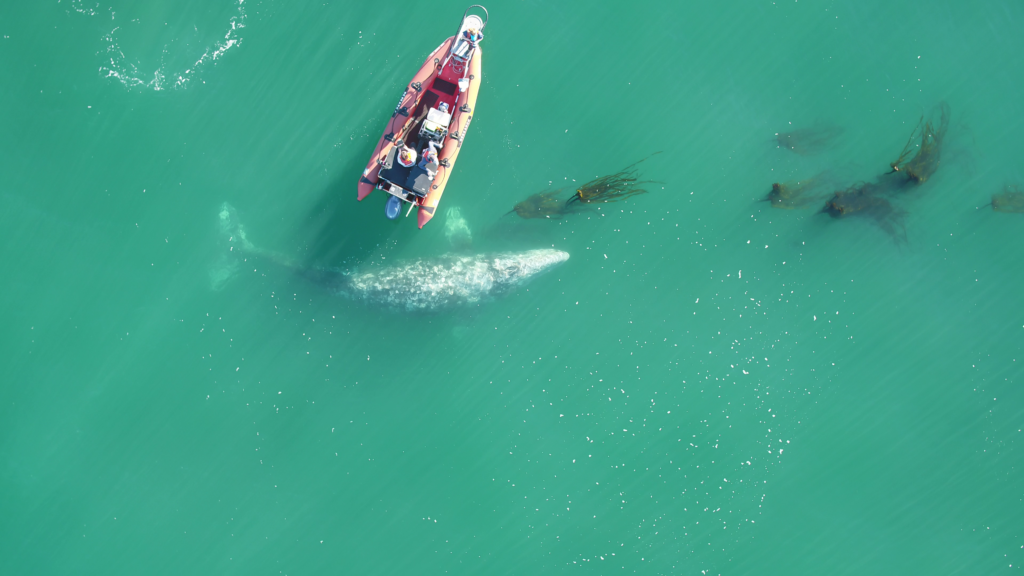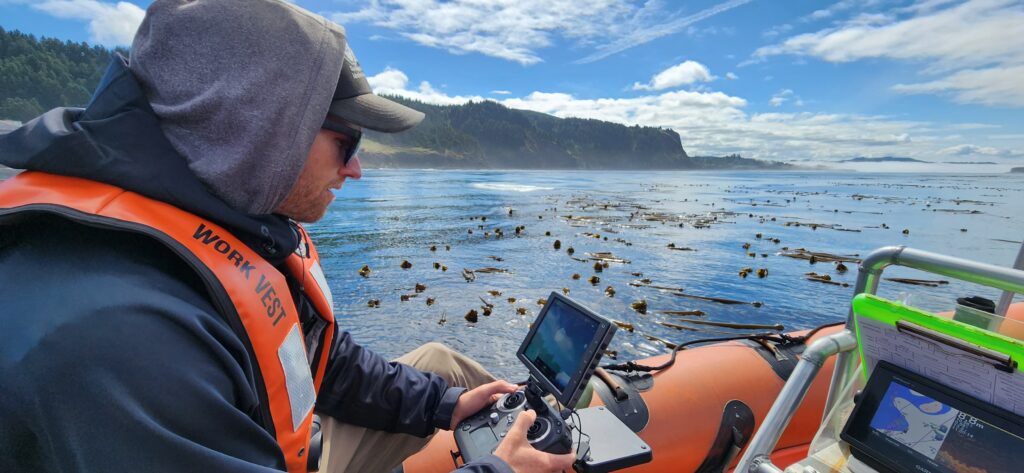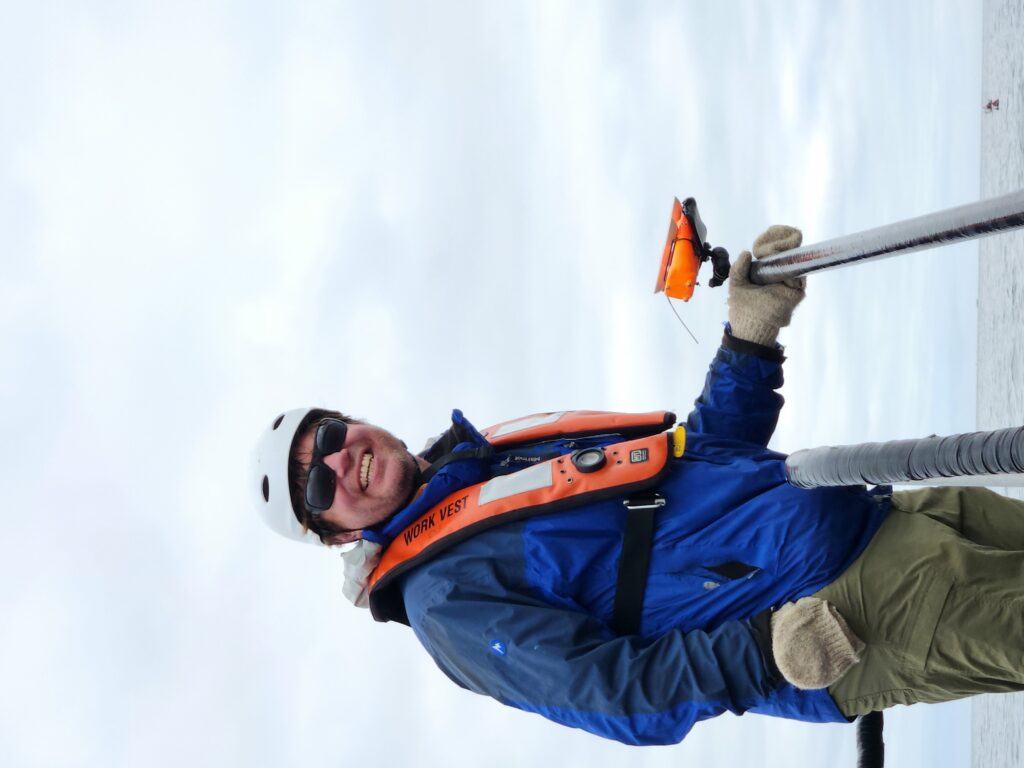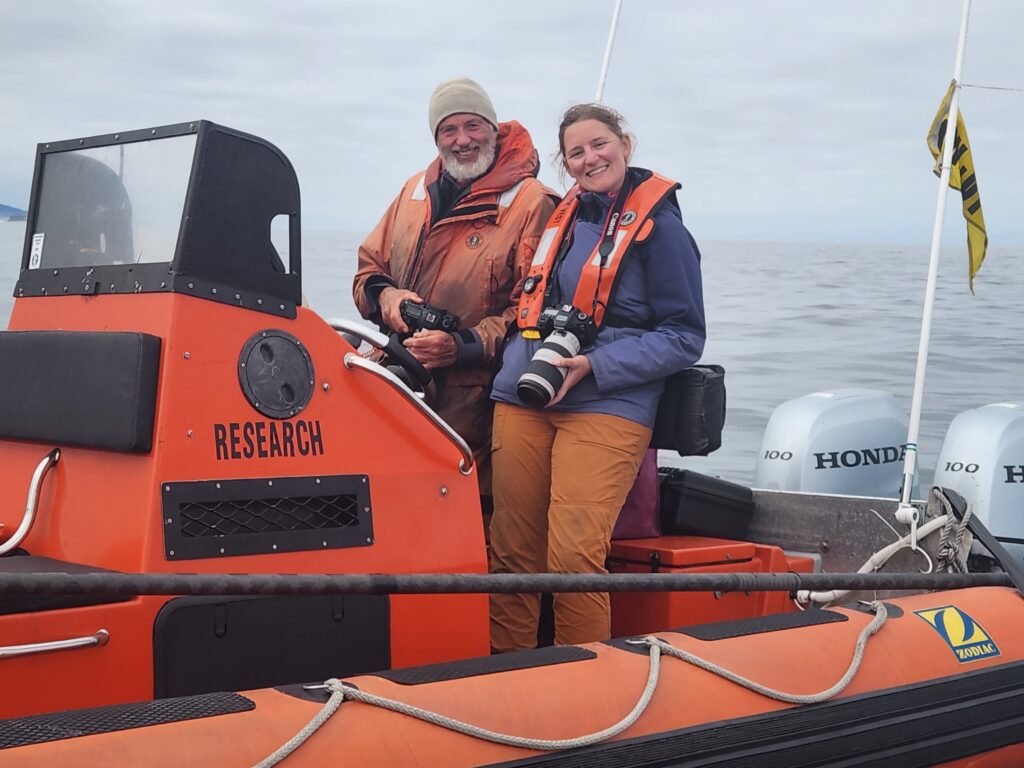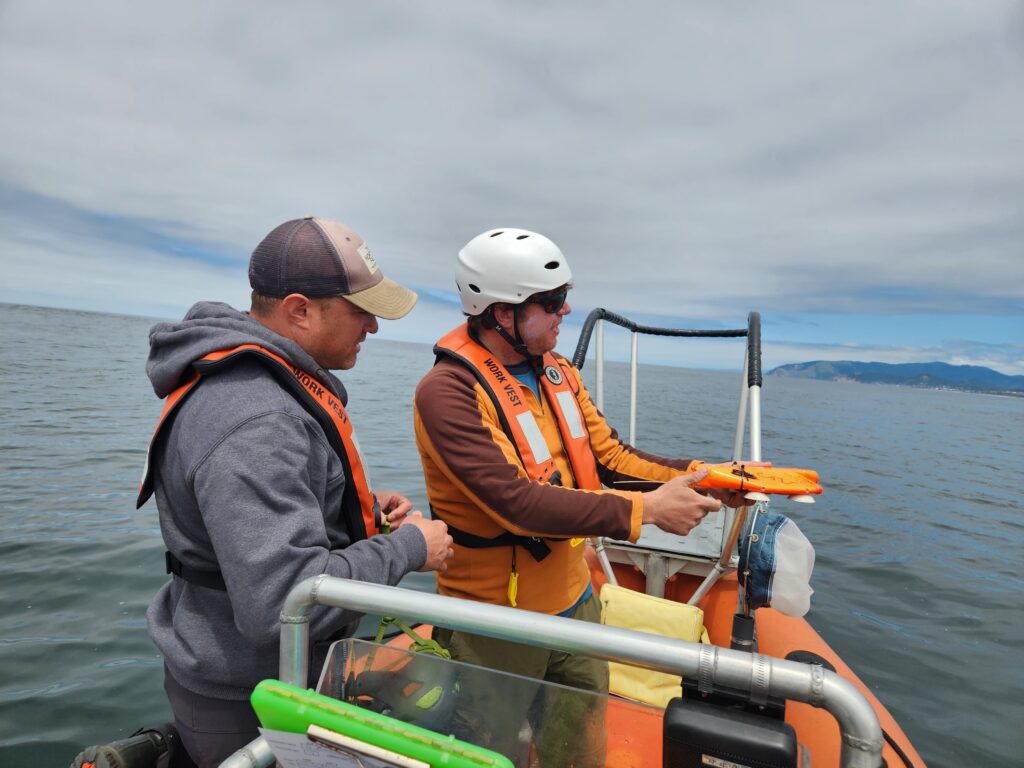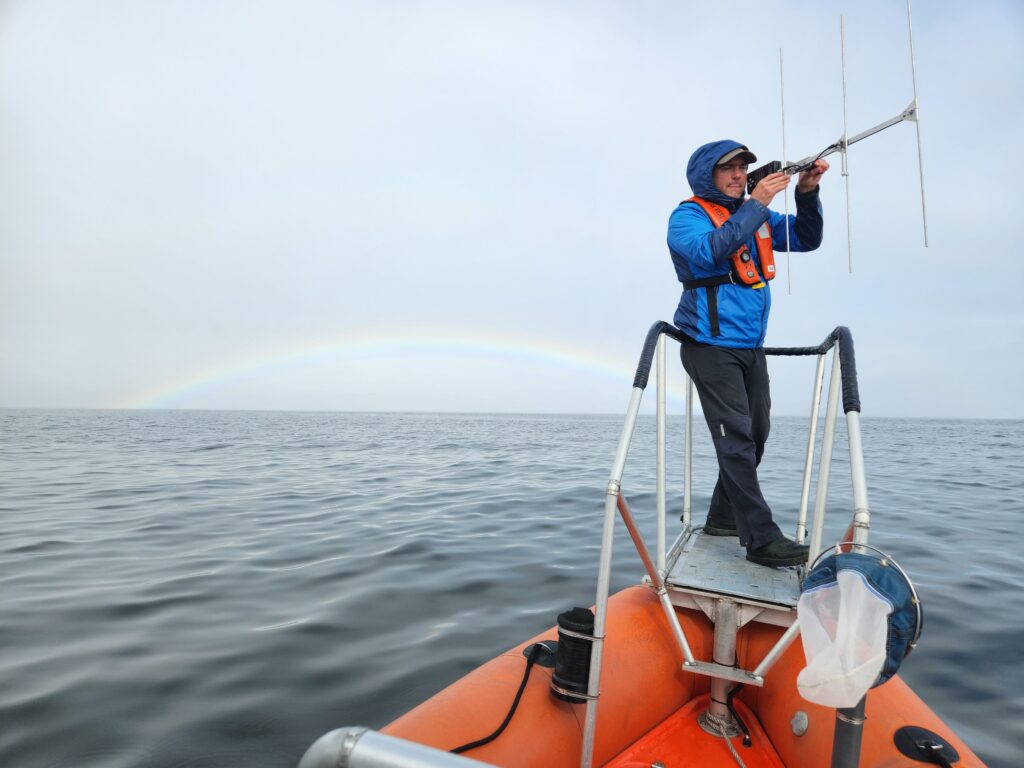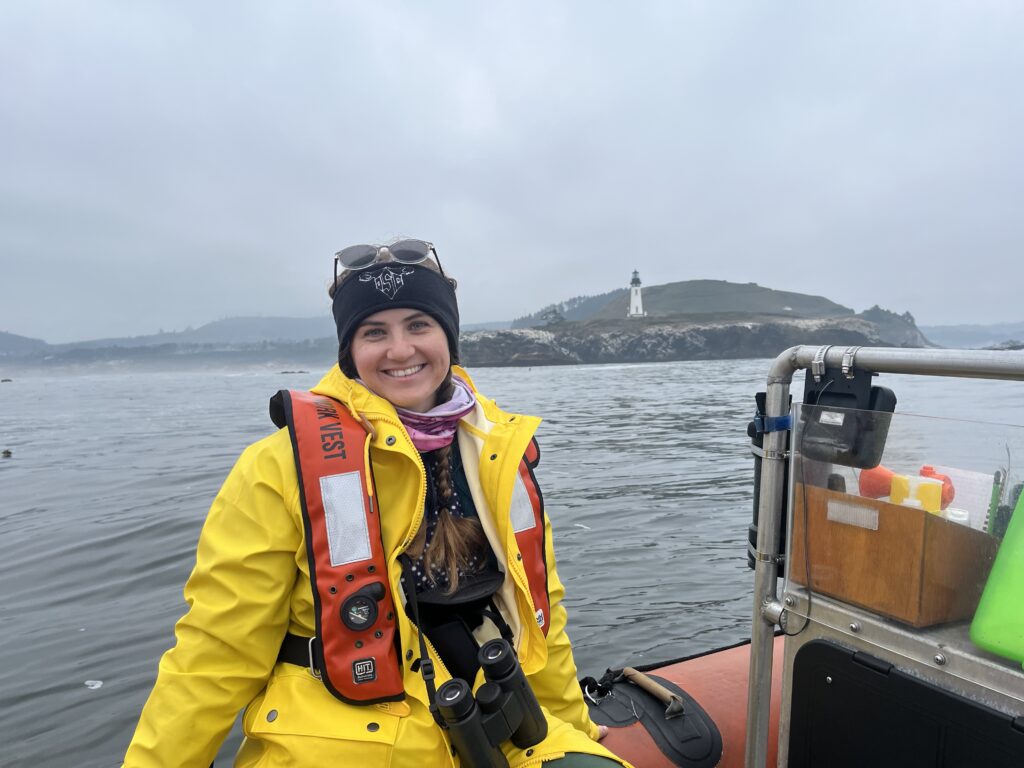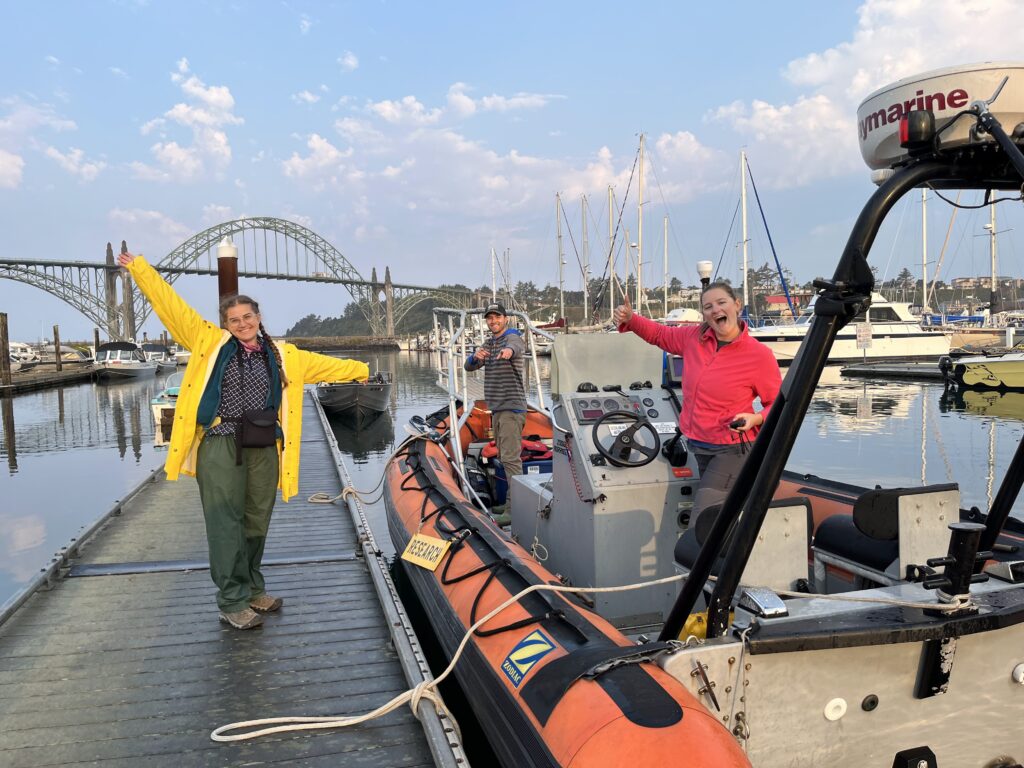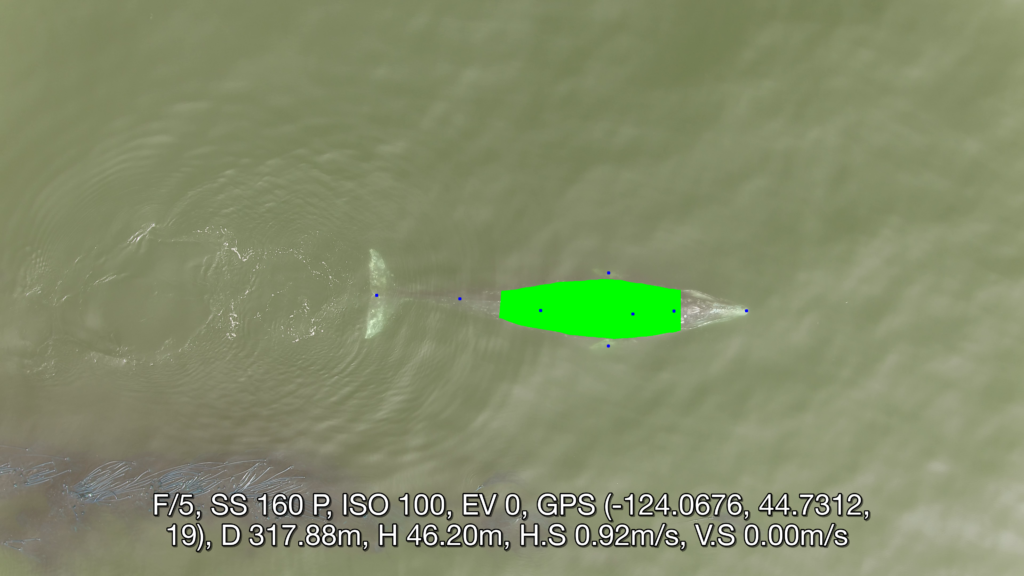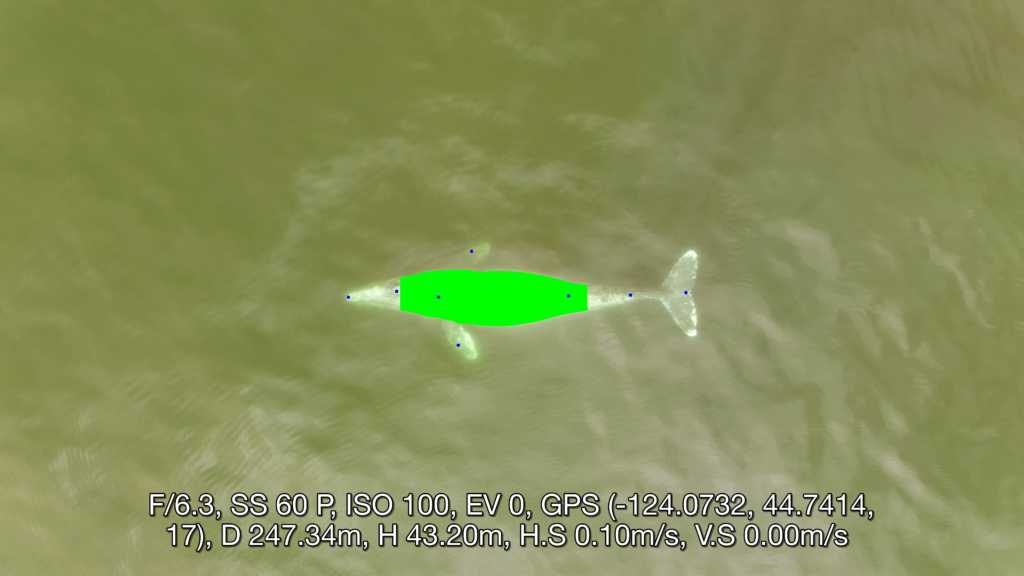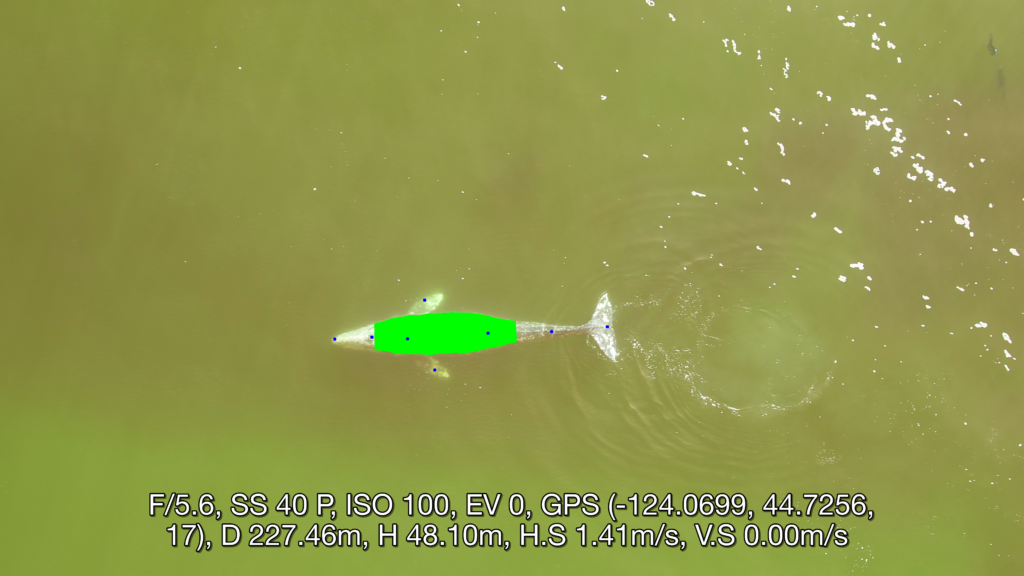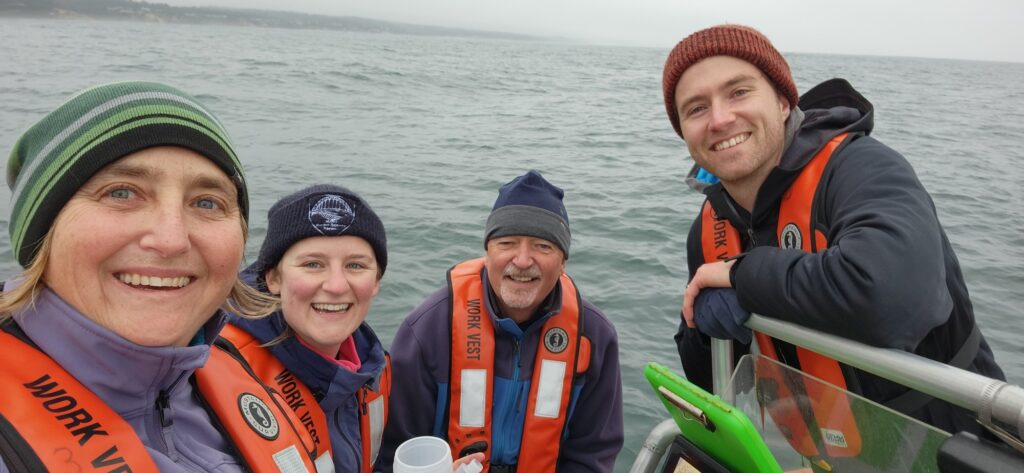Dr. Alejandro A. Fernández Ajó, Postdoctoral Scholar, Marine Mammal Institute – OSU Department of Fisheries, Wildlife, & Conservation Sciences, Geospatial Ecology of Marine Megafauna (GEMM) Lab.
A year in a baleen whale life typically involves migrating between polar or subpolar “feeding grounds” in summer and subtropical “breeding grounds” in winter. Calves are typically born during a specific portion of the winter months (Lockyer and Brown, 1981), suggesting a regular alternation between reproductively active and inactive states (Bronson, 1991). Seasonal reproduction in mammals often includes pronounced annual cycles in reproductive hormones triggered by changes in the photoperiod or other environmental cues, along with endogenous circannual cycles (Hau 2007).
Testosterone (T), a key reproductive hormone, is crucial for male spermatogenesis (development of sperm) and influences behaviors such as courtship, mating, and male to male competition. Seasonally breeding mammals exhibit an annual peak in T. The amplitude of T can be influenced by age, with immature males having low T levels that rise sharply at sexual maturity (Beehner et al. 2009; Chen et al. 2009) and then, in some species, declines in the older males (i.e., reproductive senescence; Hunt et al. 2020; Chen et al. 2009). This variability, combined with social cues and exposure to stressors, contributes to individual differences in hormone patterns.
Seasonal testosterone patterns are well-documented in many vertebrate males, including terrestrial mammals, pinnipeds, and odontocetes (Wells, 1984; Kellar et al., 2009; Funasaka et al., 2011, 2018; O’Brien et al., 2016; Richard et al., 2017). However, our understanding of seasonal patterns of testosterone in large whales, especially baleen whales, remains incomplete due to their cryptic nature. Improved understanding of cyclic changes in male reproductive hormones could enhance population management and conservation of whale species. For instance, a clear comprehension of male testosterone cycling in a species can potentially improve the accuracy of sex identification for unknown individuals through hormone ratios. It can also aid in better discriminating sexually active adults from juveniles, understanding the age of sexual maturity (often challenging to determine in males), the potential occurrence of reproductive senescence in older males, and determining the month and location of the conceptive season—which, in turn, may inform estimates of gestation length in females. Insight into these aspects of baleen whale reproductive biology would enhance our ability to understand variation in population abundance and vital rates.
Recent advancements in hormone extraction from non-plasma (blood) samples, such as blow, fecal, blubber, earplugs, and baleen, offer new avenues for studying baleen whale physiology (Hunt et al., 2013). However, obtaining repeated samples from an individual, and over an extended period, from whales to assess hormone patterns is challenging. In this context, earplug endocrine analyses, focusing on cerumen layers (ear wax), have provided insights into sexual maturity in male blue whales (Trumble et al., 2013). However, the temporal resolution (e.g., years) in this sample type limits the detection of seasonal patterns. On the other hand, baleen data provides longitudinal information with sufficient resolution for understanding male reproductive biology and it has been successfully applied to the study of whale species with longer baleen plates (over a decade of an individual’s life), such as the bowhead whale, North Atlantic right whale, and a blue whale (Hunt et al., 2018; Hunt et al., 2020). Additionally, seasonal trends in testosterone have been documented in male humpback whales through blubber biopsy analyses (Cates et al. 2019).


Photos: This is Orange Knuckles (AKA OK). He is one of the males that regularly visit the Oregon coast. He was first observed in 2005, which means he is an adult male and is at least 19 years old (as of 2024). Do you want to learn more about him and other PCFG whales that frequent the Oregon coast? Visit IndividuWhale. Credit: GEMM Lab.
With the GEMM Lab’s GRANITE project, we are delving into an eight-year dataset of individual gray whale morphometrics and fecal hormone data to investigate important aspects of male reproduction in detail. Our non-invasive data collection methods (fecal samples and drone overflights) allow important repeated measurements of the same individual throughout and between foraging seasons. Preliminary results from our analysis reveal a significant association of the day of the year with elevation in T, suggesting that in the late summer the Oregon Coast could be an important area for gray whale social behavior in preparation for reproduction. Furthermore, we are uncovering an association between age and T levels, highlighting the potential for us to identify the age for onset of sexual maturity in males. Additionally, we are exploring the relationship between T levels, exposure to stressors, body condition, and other factors that might influence male reproductive attempts. These data will provide valuable information for conservation and management efforts, aiding in critical habitat identification and reproductive timing for gray whales. Stay tuned for the new results to come!
Did you enjoy this blog? Want to learn more about marine life, research, and conservation? Subscribe to our blog and get a weekly message when we post a new blog. Just add your name and email into the subscribe box below.
References
- Beehner JC, Gesquiere L, Seyfarth RM, Cheney DL, Alberts SC, Altmann J. 2009. Testosterone related to age and life-history stages in male baboons and geladas. Horm Behav 56:472-80.
- Bronson FH (1991) Mammalian Reproductive Biology. University of Chicago Press, Chicago, IL.
- Buck CL, Barnes BM. 2003. Androgen in free-living arctic ground squirrels: seasonal changes and influence of staged male-male aggressive encounters. Horm Behav 43:318-26.
- Cates KA, Atkinson S, Gabriele CM, Pack AA, Straley JM, Yin S. 2019. Testosterone trends within and across seasons in male humpback whales (Megaptera novaeangliae) from Hawaii and Alaska. Gen Comp Endocrinol 279:164-73.
- Chen H, Ge R-S, Zirkin BR. 2009. Leydig cells: from stem cells to aging. Mol Cell Endocrinol 306:9-16.
- Funasaka N, Yoshioka M, Suzuki M, Ueda K, Miyahara H, Uchida S (2011) Seasonal difference of diurnal variations in serum melatonin, cortisol, testosterone, and rectal temperature in Indo-Pacific bottlenose dolphins (Tursiops aduncus). Aquatic Mamm 37: 433–443.
- Hau M. 2007. Regulation of male traits by testosterone: implications for the evolution of vertebrate life histories. BioEssays 29:133-44.
- Hunt KE, Moore MJ, Rolland RM, Kellar NM, Hall AJ, Kershaw J, Raverty SA, Davis CE, Yeates LC, Fauquier DA. 2013. Overcoming the challenges of studying conservation physiology in large whales: a review of available methods. Cons Physiol 1:cot006.
- Hunt KE, Buck CL, Ferguson S, Fernández Ajo A., Heide-Jørgensen MP, Matthews CJD, Male Bowhead Whale Reproductive Histories Inferred from Baleen Testosterone and Stable Isotopes, Integrative Organismal Biology, Volume 4, Issue 1, 2022, obac014 https://doi.org/10.1093/iob/obac014
- Kellar N, Trego M, Marks C, Chivers S, Danil K (2009) Blubber testosterone: a potential marker of male reproductive status in shortbeaked common dolphins. Mar Mamm Sci 25: 507–522
- Lockyer C, Brown S (1981) The migration of whales. In Aldley D, ed. Animal Migration Society for Experimental Biology Seminar Series, Book 13. Cambridge University Press, Cambridge, England.
- O’Brien JK, Steinman KJ, Fetter GA, Robeck TR (2016) Androgen and glucocorticoid production in the male killer whale (Orcinus orca): influence of age, maturity, and environmental factors. Andrology 5: 180–190.
- Richard JT, Robeck TR, Osborn SD, Naples L, McDermott A, LaForge R, Romano TA, Sartini BL (2017) Testosterone and progesterone concentrations in blow samples are biologically relevant in belugas (Delphinapterus leucas). Gen Comp Endocrinol 246: 183–193.
- Trumble S, Robinson E, Berman-Kowalewski M, Potter C, Usenko S (2013) Blue whale earplug reveals lifetime contaminant exposure and hormone profiles. Proc Nat Acad Sci 110: 16922–16926.
- Wells RS (1984) Reproductive behavior and hormonal correlates in Hawaiian spinner dolphins (Stenella longirostris). In Perrin WR, Brownell RL Jr, DeMaster DP, eds. Reproduction in Whales, Dolphins, and Porpoises. Cambridge: Reports of the International Whaling Commission, pp 465–472.

















